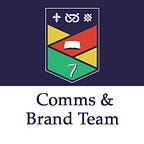Website improvements planned for 2021
In this blog, we outline some of the website improvements we have planned for 2021 — in line with new technologies and digital trends — in order to make our site more effective in meeting the University’s key objectives.
TL;DR version: We have begun a full website and social media audit — with a specific focus on website performance for the prospective student audience — including reviewing search engine optimisation (SEO), site speed, user experience (UX), navigation, and user journeys.
1. SEO audit
Search engines are the most popular way to find information on the web, and this is especially true with educational institutions. Almost half of the traffic on the Keele website originates from search engines. With that in mind, an organic search strategy is essential to increasing the number of visitors on the website through achieving high-ranking search results placements and increasing click-throughs.
We performed an in-house SEO audit of keele.ac.uk during February 2021, and will now work through the action points with colleagues in Global Student Recruitment and Admissions, the Business Gateway, and other areas of the University over the coming months. This includes actions around website content such as improving the meta data of pages to increase click-throughs from Google, optimising page content to be ‘search engine friendly’, and improving internal page linking.
There are also some technical changes that we will make to the site, including reducing the size of the mobile menu, and submitting new site maps to Google. We’re also making page speed changes, which links into the Core Web Vitals, as detailed below.
2. Page speed improvements
Page speed affects user experience, search engine rank factor, and bounce rate. A fast site speed will result in a better user experience, and a user will typically stay on a site longer if the site speed is faster, and complete the tasks that they set out to do, e.g. enquire about a course. Increasing site speed is therefore a strategic way to ensure that we don’t lose traffic, and this year we have identified new ways to improve the speed across the entire website.
By improving image compression, ‘lazy-loading’ images and videos on page load, and hiding elements during page load (known as ‘cloaking’), we have been able to improve First Contentful Paint (the first content a visitor sees) from 3.3s down to 1.9s on 3G mobile, and Largest Contentful Paint (full page load, including 3rd party embeds) from 9.2s down to 5.9s. Work will continue over the coming months to improve this further, especially on mobile.
We’ve also developed a new website template specifically for digital marketing campaigns, led by GSRA. Coded entirely in-house by our Web Development Manager Chris Beard, the stripped-down template achieves a mobile speed score of 95/100. This will help increase conversion rates from digital student recruitment ads even further.
3. User experience audit
We have also audited the site’s user journeys with an initial focus on undergraduate student recruitment. We used stats from Google Analytics to better understand prospective students’ behaviours and journeys on the website, and identified opportunities to optimise performance and simplify the user experience.
We will soon start to implement the action points, which include building a new ‘news’ template which will drive traffic to the study and research pages, developing a new template for course pages to help increase conversion rates, and making changes to other key landing pages to decrease exits from the website. We have also implemented a new, clearer approach of on-page navigation which is less reliant on large images, and therefore quicker to load.
4. Student recruitment journey improvement
We have begun a project — in collaboration with Global Student Recruitment and Admissions — to develop a single area of the website containing all information for prospective students. This area will act as an ‘online prospectus’ and should perform the function of an ‘always-on’ virtual open day through the combination of advice, information, and experiences. It will be the single source of truth for all student recruitment content, including course content. Expected benefits include increased enquiries and conversions and, over time, less reliance on printed material and third-party virtual tours for student recruitment.
5. Implementing our new brand direction
In March, we started the process of implementing our new brand direction across the website and social media, and work will continue on this over the coming months. Page banners across the website are being standardised to the new graphical style, in addition to page content with a much greater emphasis on clear and engaging storytelling with a consistent tone of voice. Social media icons are also being updated to the new style.
By Paul Newton, Head of Digital
